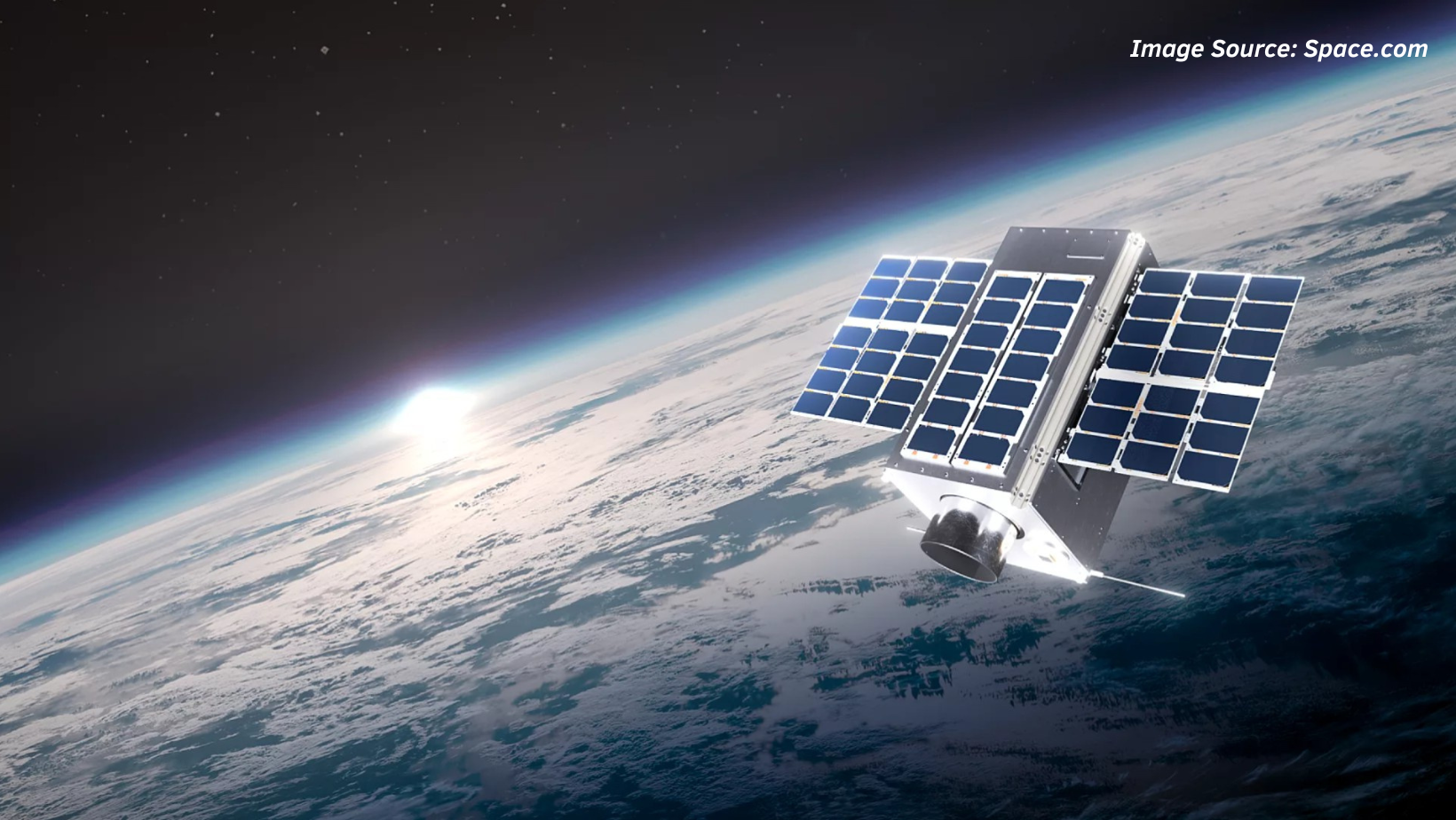Introduction
The 2022 Ukraine War has demonstrated the strategic relevance of private enterprises in improving the resiliency of space systems. The role of the private sector in supporting military operations was never disputed. The 2022 Ukraine War is unique as Elon Musk, a private individual of his own accord, had interfered in the conflict by supplying Starlink user terminals for satellite communication. The satellite communication established through these terminals were used in Ukraine by civilians and the Ukrainian Armed Forces. Russia before invading Ukraine had attacked the satellite communication system on which the Ukrainian Armed Forces had relied on. The services of the satellite affected was of Viasat, a private entity from the United State. Private enterprises based in the United States had enabled and supported Ukraine’s capability in the cyber and space domain. The defensive capabilities of Ukraine in the cyber domain were assisted by Microsoft, Google, and Amazon.[1] Satellite communication, satellite imagery, early warning, and domain awareness abilities were provided by private enterprises like SpaceX, Palantir, Mandiant, Planet, Capella Space, BlackSky Technology and Maxar.[2]
Private enterprises in United States’ space sector have made several technological breakthroughs in accomplishing tasks which earlier had the monopoly of the state. United States has a thriving ecosystem of private enterprises who have in recent years increased their share of the global space economy. The private sector has in particular taken a lead in developing cyber domain technologies like cloud computing, quantum computing, artificial intelligence, and machine learning. Information technology being intrinsically linked with the space system has been hardened and supported by the private sector. The private sector’s core competency in innovation, design, manufacturing, and cost-effectiveness has helped embed them in the supply-chain of weapon systems, platforms, and space systems.
India to leapfrog in the development of space-based technology has similarly started encouraging the participation of the private sector. The growth of the private sector ecosystem could help give innovative solutions to improve the resiliency of space systems of India and other smaller space-faring states.
Strategic Relevance of Private Enterprises in the Space Sector
In the 1991 Gulf War, the commercially available space-based assets in orbit were heavily used to support the war effort. Subsequent wars in Iraq and Afghanistan had also hired the services of commercially available space systems. During these conflicts, United States had leased and blocked its adversaries from accessing space systems to support their military operations. In the aftermath of these conflicts the private defence contractors based in the United States and Europe have started to increasingly play a dominant role in fulfilling the needs of the commercial, civilian, and military space sector by providing remote sensing, satellite communication and weather forecasting services.
The dual-use nature of space-based assets has permitted the use of commercially available satellites for a military operation’s requirements of navigation and reconnaissance. The commercially available space-based assets could be hired to complement the space support operations of an armed forces’ space system. A space support operation would include services of satellite communication, Space Situational Awareness (SSA), Intelligence, Surveillance, and Reconnaissance (ISR), and Positioning, Navigation, and Timing (PNT). Situational awareness of outer space and Earth requires a collaboration with a host of state and non-state organisations. Assets of a private vendor when complemented with the state-owned space-based assets could improve the predictive ability of a SSA system. Cooperation with private enterprises could as well help in overseeing the adherence to arms control measures and also aid in tracking the trajectory of a ballistic missile. The private sector can also be employed for Defensive Counterspace Operations (DCS) to guard and ensure the resiliency of space systems.[3] A private enterprise’s competency in manufacturing could be used for reinforcements as was witnessed during the 2022 Ukraine War. It has been reported that the Russian troops were also using the services of Starlink terminals for satellite communication. The Starlink terminals used by the Russian troops were acquired by Russian firms who had used intermediaries to import the terminals.[4] The access to these Starlink services was later blocked by SpaceX.[5]
Aerospace Industry and National Security
United States being a prominent space power has the most advanced civilian and military space programme. The aerospace industry there has for this reason benefitted from the government contracts awarded for various military and civilian space missions. Traditional defence contractors like Boeing, Lockheed Martin and Northrop Grumman had after the 2003 Iraq War pivoted towards the manufacturing of military-grade satellites. The participation granted to the private sector in the strategic domain like satellite communication, payload launch vehicles and remote sensing have sprouted several start-ups and unicorns.[6] Some of the satellite internet providers like Starlink and Viasat have global operations while Hughes Communications, EarthLink, and Charter Communications have a significant domestic market share. Geospatial intelligence companies like Maxar Technologies, BlackSky, Planet Labs and Capella Space have a constellation of satellites that have provided high-resolution satellite imagery to the United States government and armed forces. The capability to launch payload into outer space has been developed by a limited number of non-state entities. Northrop Grumman with Pegasus, Minotaur and Antares space launch vehicles have provided services of sending payloads to the Lower-Earth Orbit (LEO). SpaceX has gradually emerged as a pioneer in the aerospace industry by achieving several milestones. SpaceX’s Falcon 9 is the first reusable rocket. The cost-effectiveness developed by SpaceX’s Dragon Spacecraft has replaced the services provided by Russia in sending payloads and astronauts to the International Space Station (ISS).
United States’ over-reliance on the outer space domain has left it vulnerable to pre-emptive attacks while also concurrently creating infrastructure for resiliency. The 2024 Commercial Space Integration Strategy released by the United States Department of Defence (DoD) highlighted that the “… Department will prioritize resiliency in its national security architectures. Integrating commercial space solutions will strengthen resiliency by increasing the number of commercial providers, diversifying supply chain, and expanding the variety and number of solutions the Department can employ. Commercial solutions leveraged by the Department must be resilient themselves, particularly against cyber threat.”[7]
In Europe, the private sector ecosystem has been contributing to build resilience in the space sector by developing a reusable launch system, and rendezvous, docking and in-space servicing of satellites. The various projects to achieve the aforementioned goals are being funded by the European Union (EU) to various European private-for-profit entities. The success of a reusable launch system demonstrated by SpaceX is being replicated by civilian space agencies and the private enterprises of other states. The Retro Propulsion Assisted Landing Technologies (RETALT) project for a reusable launch system has the participation of private enterprises like the ALMATECH SA based in Switzerland, AMORIM CORK COMPOSITES SA based in Portugal, CFS ENGINEERING SA based in Switzerland, DEIMOS SPACE SOCIEDAD LIMITADA UNIPERSONAL based in Spain, and MT AEROSPACE AG based in Germany.[8] The Recovery and Return-To-Base European Reusable Micro-Launcher (RRTB) Project is similarly being developed to launch small satellites with the participation of several private entities from Germany, Greece, Italy, Belgium, Czechia and Spain.[9] Lastly, the European Robotic Orbital Support Services (EROSS) project has been working with private enterprises towards reducing the threat of space debris by improving the life-cycle management of satellites.
While in China private enterprises have been crucial in supporting state sponsored infrastructure projects.[10] Chinese president Xi Jingping in 2014 had declared Document 60 to permit private investment in developing space launch vehicles and satellites. For China, the development of aerospace technology, competing in civilian space missions and the contribution of the private sector in the commercial space sector and space missions have had a geopolitical connotation. The emergence of several Chinese private enterprises are crucial in utilising the opportunity offered by the commercial space sector. Chinese private sector enterprises like Galactic Energy, i-Space, LinkSpace, and Spacety have attempted to replicate the success of SpaceX and other private enterprises based in the United States by developing space launch capability.[11]
Liberalisation of India’s Space Sector
The Indian government with its updated space policy has put a sectoral cap of 100% on the “Manufacturing of components and systems/ sub-systems for satellites, ground segment and user segment”.[12] The same limit has been put on “Launch Vehicles and associated systems or subsystems”, and “… Spaceports for launching and receiving Spacecraft”.[13] The reforms introduced are to be regulated on the basis of the end-use of the components manufactured. For instance, the restrictions on the manufacture of components and subsystems are not as stringent as the restrictions put on the manufacture of satellites and launch vehicles.[14] The objective of the reforms has been to capture by 2030 a market share of 10% of the global space economy.[15] The largest contribution to the global space economy is expected to be from satellite-based services as the cost of space-launch vehicles have substantially come down. India’s new space policy will help meet the global demand of satellite-based services.
The reforms introduced will enable the Indian private sector to compete and replicate the success of the United States and other major spacefaring powers in Europe. The private sector in India is incentivised to invest in Indian start-ups as the Indian space economy is projected to grow to $13 billion by 2025.[16] In a short span of time, Indian start-ups have started to carve a niche in the Indian space sector. Indian start-ups like Agnikul Cosmos, Skyroot Aerospace, Dhruva Space, Bellatrix Aerospace, Aadyah Aerospace have focused on the launch of payloads. In March 2024, Skyroot Aerospace successfully tested the stage-2 of its Vikram 1 space launch vehicle. The success was followed by Agnikul Cosmos who on May 30, 2024, became the world’s first to test a technology demonstrator through a 3D-printed rocket.[17] The launch was a test for Agnibaan, an orbital launch vehicle.[18] Other Indian start-ups like Pixxel, Satsure, Satyukt Analytics, PierSight, Astrome Technologies, Vasundhara Geo Technologies and Digantara have been designing and manufacturing satellites for various other applications.
The Indian Space Policy (ISP) – 2023 has authorised Indian National Space Promotion & Authorisation Centre (IN-SPACe) to sanction space missions that have implications for national security.[19] Its other objectives have firstly, focused on encouraging the private players for the establishment of manufacturing and incubation centres.[20] Secondly, the space policy aims to enable the Indian space sector to serve as a service provider for the global space missions.[21] The ISP – 2023 to accelerate the growth of the private sector has permitted the use of specialised technical facilities by non-government entities (NGE), it has also permitted the transfer of best-practices and technology to NGEs.[22] Lastly, the ISP – 2023 allows the access of publicly funded launch-infrastructure and remote sensing data to NGEs.[23]
Indian space start-ups despite these developments have lacked a regulatory mechanism to manage the expectation of the private sector.[24] It has also faced the challenge of being still reliant on the government for tax rebates, R&D grants, guaranteed orders and export promotion regime.[25] The draft Space Activities Bill, 2017 had proposed a space regulatory mechanism to facilitate the authorisation and prohibition of space activities by granting licence for commercial space sector.[26] The objective of the proposed bill was to harmonise space activities with international space law and regulatory mechanisms.[27]
Conclusion
The success of the private space sector in United States has inspired other space-faring powers to encourage the participation of private enterprises in the space domain. Outer space is a strategic domain as the civilian application of space systems are essential for the functioning of every critical infrastructure asset. Outer space domain is also strategically important for a modern armed forces as space systems have firstly, enhanced the speed of communication between different platforms and secondly, improved the scale of domain awareness. The national security of every state is reliant on the resiliency of space systems. The national civilian space agency of traditional space-faring powers has started to shift their focus on space exploration missions. The private space sector has emerged to support and complement some of these space exploration missions. The new space race is symbolised by the participation of private players and start-ups who have emerged to exploit the commercial viability of the space sector.
Private enterprises have been for some time, designing and manufacturing weapon systems and other essential goods for various armed forces. The space sector which was barred for the participation of non-state entities have immensely benefited by the cost-efficient and innovative solutions offered by the private sector. An ecosystem of private enterprises can be utilised to meet the demands of military operations. The manufacturing capability of the private sector can in crisis be employed to launch payloads. Secondly, the services of the private sector can be employed to augment the ISR, PNT, and satellite communication of an armed forces. Thirdly, the expertise of the private sector in the cyber domain can be applied to harden the information system of space systems.
The liberalisation of the Indian space sector is likely to encourage the development of a private sector ecosystem. In times of crisis the influx of investment through the liberalisation of the sectoral cap will create infrastructure and capabilities that will be crucial in managing the expectation of the armed forces. When compared to India, the private sector ecosystem in the United States and Europe are mature and advanced. India’s advantage in offering cost-effective and sophisticated space missions may open opportunities in achieving its national security and strategic goals.
DISCLAIMER
The paper is author’s individual scholastic articulation and does not necessarily reflect the views of CENJOWS. The author certifies that the article is original in content, unpublished and it has not been submitted for publication/ web upload elsewhere and that the facts and figures quoted are duly referenced, as needed and are believed to be correct.
References
- Franklin D. Kramer, ‘The Sixth Domain: The Role of the Private Sector in Warfare – Atlantic Council’ (Atlantic Council, 4 October 2023), https://www.atlanticcouncil.org/in-depth-research-reports/report/the-sixth-domain-the-role-of-the-private-sector-in-warfare/#lessons-private.
- D. Kramer.
- ‘AIR FORCE DOCTRINE PUBLICATION (AFDP) 3-14 COUNTERSPACE OPERATIONS’ (Curtis E. Lemay Center, 25 January 2021), https://www.doctrine.af.mil/Portals/61/documents/AFDP_3-14/3-14-D05-SPACE-Counterspace-Ops.pdf.
Reuters, ‘Russia Using Thousands of SpaceX Starlink Terminals in Ukraine, WSJ Says’, Reuters, 16 February 2024, sec. Europe, https://www.reuters.com/world/europe/russia-using-thousands-spacex-starlink-terminals-ukraine-wsj-says-2024-02-15/.
Anthony Capaccio, ‘Pentagon Teams Up With SpaceX to Block Russia From Using Starlink’, Bloomberg.Com, 9 May 2024, https://www.bloomberg.com/news/articles/2024-05-09/russia-starlink-access-blocked-by-pentagon-spacex-ukraine.
- Reuters, ‘Iraq War Boosts Space Spending’, 3 June 2003, https://www.wired.com/2003/06/iraq-war-boosts-space-spending/.
- ‘Department of Defence Commercial Space Integration Strategy 2024’ (Department of Defence United States of America, n.d.), https://media.defense.gov/2024/Apr/02/2003427610/-1/-1/1/2024-DOD-COMMERCIAL-SPACE-INTEGRATION-STRATEGY.PDF.
- ‘Retro Propulsion Assisted Landing Technologies | RETALT Project | Fact Sheet | H2020’, CORDIS | European Commission, accessed 20 August 2024, https://cordis.europa.eu/project/id/821890.
- ‘Recovery and Return-To-Base European Reusable Micro-Launcher Project | RRTB Project | Fact Sheet | H2020’, CORDIS | European Commission, accessed 20 August 2024, https://cordis.europa.eu/project/id/870340.
- Hema Nadarajah, ‘China: A Global Power’s Ambitions in Outer Space’, Asia Pacific Foundation of Canada, accessed 29 August 2024, https://www.asiapacific.ca/publication/china-global-powers-celestial-ambitions.
- Neel V. Patel, ‘China’s Surging Private Space Industry Is out to Challenge the US’, MIT Technology Review, accessed 30 August 2024, https://www.technologyreview.com/2021/01/21/1016513/china-private-commercial-space-industry-dominance/.
- ‘Review of Foreign Direct Investment Policy on Space Sector’, PIB, 24 March 2024, https://pib.gov.in/pib.gov.in/Pressreleaseshare.aspx?PRID=2011523.
- ‘Review of Foreign Direct Investment Policy on Space Sector’.
- Bhaswar Kumar, ‘“Launch Vehicles Are like ICBMs”: New Space FDI Norms Keep Security in Mind’, Business Standard, 9 March 2024, https://www.business-standard.com/economy/news/launch-vehicles-are-like-icbms-new-space-fdi-norms-keep-security-in-mind-124030700896_1.html.
- Amrit Raj, ‘Space’, Invest India, 8 February 2024, https://www.investindia.gov.in/sector/space.
- Raj.
- Pranav Dixit, ‘Indian Space Startup Agnikul Makes History with World’s First 3D-Printed Rocket Engine Launch’, Business Today, 31 May 2024, https://www.businesstoday.in/technology/news/story/indian-space-startup-agnikul-makes-history-with-worlds-first-3d-printed-rocket-engine-launch-431557-2024-05-31.
- The Hindu Bureau, ‘Skyroot Successfully Test Fires Stage-2 of Vikram 1 Space Launch Vehicle’, The Hindu, 28 March 2024, sec. India, https://www.thehindu.com/news/national/hyderabad-based-skyroot-successfully-test-fires-kalam-250-stage-2-of-vikram-1-space-launch-vehicle/article68001573.ece.
- ‘Indian Space Policy – 2023’, n.d., https://www.isro.gov.in/media_isro/pdf/IndianSpacePolicy2023.pdf.
- ‘Indian Space Policy – 2023’.
- ‘Indian Space Policy – 2023’.
- ‘Indian Space Policy – 2023’.
- ‘Indian Space Policy – 2023’.
- AK Bhatt, ‘Indian Private Space Sector: Navigating Growth and Challenges in Era of Reform’, ETTelecom.com, 2 February 2024, https://telecom.economictimes.indiatimes.com/news/portal-in-portal/satcom/blogs/indian-private-space-sector-navigating-growth-and-challenges-in-era-of-reform/107351509.
- Bhatt.
- ‘Draft Space Activities Bill, 2017’, PRS Legislative Research, accessed 30 August 2024, https://prsindia.org/billtrack/draft-space-activities-bill-2017.
- ‘Draft Space Activities Bill, 2017’.














































